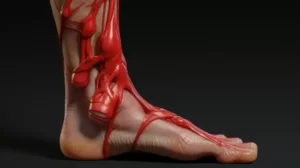Skin infections may be simple to acquire, but can be notoriously difficult to clear up. It’s crucial to deal with potential cutaneous infections immediately, especially those that could become severe. This article will explore simple, natural ways to address topical wounds to prevent infection and speed up the healing process, as well as highlighting some effective, natural topical antiseptics.
When Topical Wounds Happen
Even something as innocuous as a scrape from falling off a skateboard can lead to serious pain if left untreated or improperly treated. Proper care of the wound site is important, and this can be done by cleaning, sanitizing, and dressing the wound.
To clean the wound, try to stop the bleeding first, if possible. Apply water to the wound for about 10 minutes using a sink sprayer, hose, or a half-open bathtub faucet. This will help remove dirt, debris, and bacteria.
Once the wound is clean, clear it of all debris. You can use a washcloth and tweezers to do this gently. If the wound is too deep, dress it immediately and consult a medical professional. For mild to moderate wounds, once cleaning is done, treat the wound with a topical antimicrobial product.
Topical Antimicrobial Agents
Topical antimicrobial agents have been used for centuries to help speed up the healing process and prevent infection for cutaneous wounds. Two main categories of topical antimicrobials exist: antiseptics and antibiotics. Antiseptics are preferable for home use, as they can be applied to localized skin to kill bacteria and prevent infection.
Commonly used antiseptics include hydrogen peroxide, iodine, and Neosporin. We will discuss some lesser-known, but equally effective, natural topical antiseptics, such as manuka honey, tea tree oil, and silver-containing compounds.
Manuka Honey
Honey’s natural antibacterial properties help protect against damage from bacteria. It also has anti-inflammatory action that can quickly reduce pain and inflammation. Hydrogen peroxide is naturally found in honey, giving it antibiotic quality. Some types of honey, including manuka honey, have additional antibacterial properties due to their high levels of methylglyoxal (MG). The manuka honey’s antibiotic effect increases with the rating of the honey’s MG, measured via the Unique Manuka Factor (UMF) rating. For wound healing, a UMF rating of 10 or higher is required. Only use honey labeled “UMF Manuka Honey” or “Active Manuka Honey” for cuts, scrapes, and minor burns.
Tea Tree Oil
Tea tree oil is distilled from the leaves of the melaleuca tree of Australia. This ancient remedy has been used for various applications, such as aromatherapy, treatment of acne, athlete’s foot, cuts, herpes and cold sores, and sore throat. It has analgesic, antibacterial, antifungal, and antiviral properties, making it an important topical product. Tea tree oil can be applied directly to the skin, diluted with warm water, added to liquid soap, or mixed with vinegar and baking soda.
Silver-Containing Compounds
Silver has been used as an antimicrobial agent for centuries. It interferes with bacterial cell walls, preventing bacterial replication. Silver-based products, such as gels and dressings, can help to speed up healing and prevent infections. Although silver is not generally toxic to the body, excessive use of silver-containing products could lead to argyria, a condition that causes a blue-gray discoloration of the skin. Use silver-containing compounds sparingly and under the guidance of a healthcare professional.
Conclusion
Topical antiseptic applications are important components in the healing process of everyday cuts and scrapes, diabetic foot ulcers, chronic leg ulcers, and various minor wounds. They are ideal because of their low toxicity, ease of application, and increased concentration at the wound site. While hydrogen peroxide, iodine, and Neosporin are the standard topical agents, alternatives like manuka honey, tea tree oil, and silver-containing compounds can also be effective and are worth considering as new standards in wound care.



